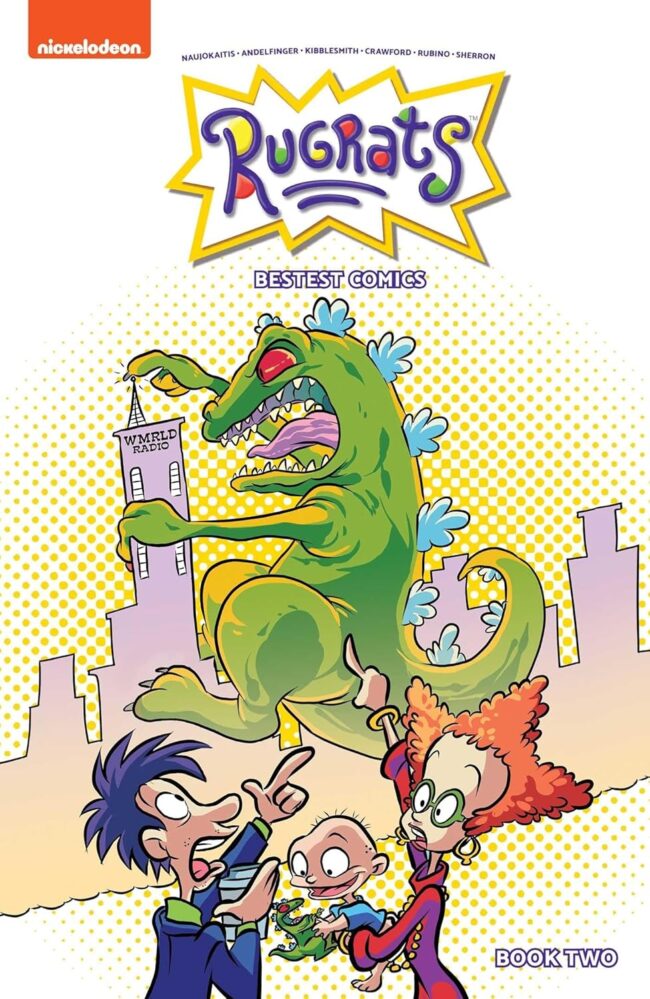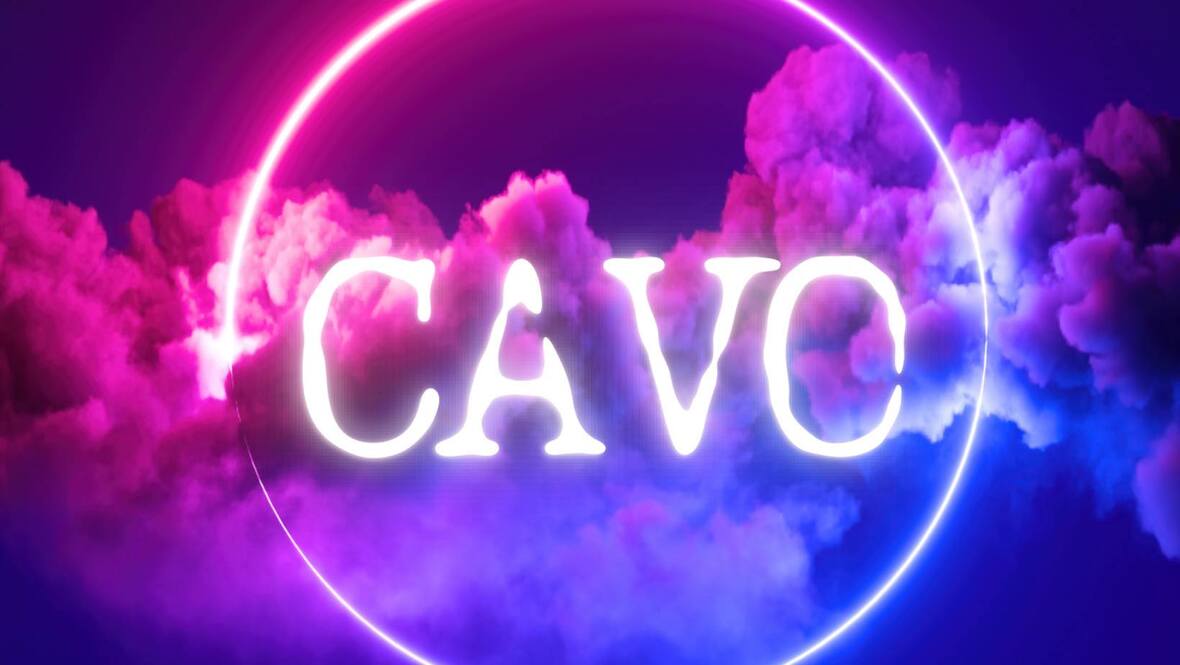
Late last year, Boom! Studios and Nickelodeon released a new collection of Rugrats comics in the form of the anthology, Bestest Comics Book Two. Spanning approximately 198 pages, the anthology, released Dec. 31, is a step up from the previous collection, which the companies released last summer. That is due in part to its featured stories. The artwork exhibited throughout the book plays an especially positive role in this presentation. The writing presented within each of the book’s stories rounds out the book’s most important elements. When it is considered alongside the artwork and the stories themselves, the whole makes Bestest Comics Book Two an improvement over Boom! Studios and Nickelodeon’s lead Rugrats comics collection.
Rugrats: Bestest Comics Book Two, the recently released volume of Rugrats comics from Boom! Studios and Nickeldeon, is a positive new offering from the companies in comparison to its predecessor. The new anthology’s appeal comes in part to its featured stories. Totaling three in all, the stories featured in this collection are joys in themselves and collectively. The first story, “R Is For Reptar,” follows Tommy, Chucky, Phil, Lil, and Susie as they each share their own story about Reptar. The whole thing starts with Tommy’s Grandpa, Lou, telling the kids a story about his days in the military, which upsets Didi, Tommy’s mom. He turns his story into one featuring Reptar, which leads each of the kids to come up with their own stories about Reptar after Stu accidentally knocks out the power to the house. Phil and Lil go first, telling a story about how Reptar had a sister. And of course, along the way they meet another lizard, who happens to resemble none other than Chucky. Angelica takes a turn next, telling a story of her doll Cynthia being a superheroine who has to battle Reptar. Susie goes third, with a tale quite similar to that of the mouse who pulled the thorn from the lion’s paw. In this case, Sudie pulls the thorn from Reptar’s foot and the pair become friends. Last but not least is Tommy’s story, which is its own loving homage to the original Godzilla movies. The babies end up in a tight spot by the story’s end, but Tommy is not able to finish before the power comes back on in the house. The epilogue to this story puts a great, smile-inducing final touch to the whole.
The second story featured in this collection is a holiday tale titled “C Is For Chanukah.” In this story, the whole Pickles family and their friends go on an outing to a ski lodge where the Rugrats go on a search for the dangerous Chanukah Golem after the kids misinterpret the story that Boris, Didi’s dad tells them about Chaunkah. When he tells them about the Golem as part of the story, it frightens them, leading them on a quest to find and stop the Golem, which leads to plenty of laughs. Meanwhile, Boris and Lou (Stu and Dry’s dad) but heads over whether Christmas or Chanukah is better. This discussion is light hearted but on a deeper level, serves as great starting point on acceptance of diversity, equity and inclusion (yeah, that’s right, Trumpites. Eat your heart out. DEI will always be here as much as you don’t want it to be). This is something that has been a staple of the Rugrats franchise since its inception decades ago. Ultimately the babies do find the Golem…or so they think. The whole will be left for audiences to discover for themselves.
The third and final story featured in Rugrats: Bestest Comics Book Two follows Tommy and company to Wizard Rat (a clear spoofing of Chuck E Cheese). The kids learn all about how the games in the business work through the use of tokens, leading to an absolutely hilarious tale spoofing the Lord of the Rings books and movies. This is a story that will especially entertain older readers because of both spoofs. Angelica, of course, plays the part of the evil queen (who happens to look a lot like Maleficent, from Disney’s Sleeping Beauty spinoff movies, interestingly enough). She uses the other kids as an army of orcs, yes orcs) to get *gasp* the last token, which is held by Tommy. Along the way, the story also spoofs Dungeons and Dragons, what with all of the “roleplaying” that the kids do. The surprise finale will be left for audiences to discover for themselves (again). When this fully entertaining story and the others examined are considered collectively, the whole makes the stories themselves a solid foundation for this anthology.
Building on that foundation is the artwork featured throughout the collection. The artwork is of importance because in comparison to the first Rugrats collection, it is clear that the artists involved in the book actually made the attempt to make each story bear the look of the original cartoon series on which these comics are based. Yes, there are some moments in which some unique visual presentations are made, but for the most part, the artists and work in this collection are to be applauded. This is just an aesthetic matter on the surface but on a deeper level, having that familiar look will leave readers with a positive mindset, ensuring further, readers’ engagement and entertainment.
Putting the final touch to Rugrats: Bestest Comics Book Two is the writing that went into each featured story. From the dialogue to the story elements themselves, there is so much to appreciate in the writing. Case in point is the noted story that closes out the collection. That the kids pretended to be fantasy characters – a wizard, a warrior, an elf-like being, a knight (of course, Tommy was the knight) and an ogre type creature (Lil) is in itself a sort of live action role playing thing that also ties into Dungeons and Dragons. Pranas T. Naujokitis, who wrote this story, is to be commended for the subtleties of all of this, in its execution. The very spoof of Lord of the Rings that Naujokitis uses as the base for the overall story, complete with a very infamous ring (or in this case token) loving character is smart writing in itself. Additionally, the timeless life lesson about playing games just to have fun versus to win (which Tommy preaches) is just as deserving of applause.
On another note, the Indiana Jones spoof included in “C Is For Chaunkah” is another example of the strength of the writing in this collection. It continues to show the influence of the Indiana Jones franchise even all these decades after Raiders of the Lost Ark first premiered in theaters nationwide. What’s more, the joke that Grandpa Boris can’t seem to keep his stories straight makes for so many laughs. Figures having trouble connecting the dots so to speak) is a time honored comedic plot device that has been used countless times on screen and on the printed page. Its use here is just as entertaining as in those other cases. To that end, the duo of Daniel Kibblesmith and Cullen Crawford is to be commended for all of this. Getting back to the previously noted aspect of the story serving as a solid starting point for a discussion on DEI (as it relates to religious differences), Kibblesmith and Crawford are to be applauded just as much for the subtle way in which it was handled. This whether there was a direct intent or not.
Nicole Andelfinger, who wrote “R Is For Reptar,” adds her own positive touch to the book’s overall writing. This is proven early on as Grandpa starts getting carried away with his tales of his time in the military and has to be reminded to ease off by Didi. Lou’s embarrassment and reaction makes for plenty of laughs. At the same time, the vivid imaginations that Tommy and his friends display as each shares his/her own Reptar tale is just as impressive in regard to the writing. It reminds readers that maybe just maybe we shouldn’t just see babies (and children in general) as being less intelligent as adults. They are able to develop their own world even if they can’t speak like everyone else. Just watch two babies “talking” to each other. One cannot help but wonder sometimes. This is Andelfinger embracing that matter and making it so entertaining along the way while also encouraging children to use their imaginations. Again, full applause is due. When this and the rest of the writing examined is considered along with the book’s overall art and the stories, the whole therein makes for so much entertainment and engagement for readers of all ages and the book an improvement over the first Rugrats comics collection.
Rugrats: Bestest Comics Book Two, released Dec. 31 through Boom! Studios and Nickelodeon, is a much needed and welcome improvement from its predecessor, which was released last summer. The book succeeds in part through its stories, which ensure readers’ engagement and entertainment in their own right. The familiarity and creativity exhibited in each of the book’s three stories does this, forming a solid foundation for the presentation. The artwork exhibited throughout the book is a big step up in comparison to that of the first book, which was sadly a shortfall. The writing presented in each of the book’s stories, is smart, sharp, and witty. At the same time it is just as accessible for kids as for adults. When it is considered alongside the art and stories, the whole of the book becomes a presentation that audiences of all ages will enjoy.
Rugrats: Bestest Comics Book Two is available now through Boom! Studios and Nickelodeon. More information on this and other titles from Boom! Studios is available at:
Website: https://boom-studios.com
Facebook: https://www.facebook.com/BOOMStudiosComics
Twitter: https://twitter.com/boomstudios








